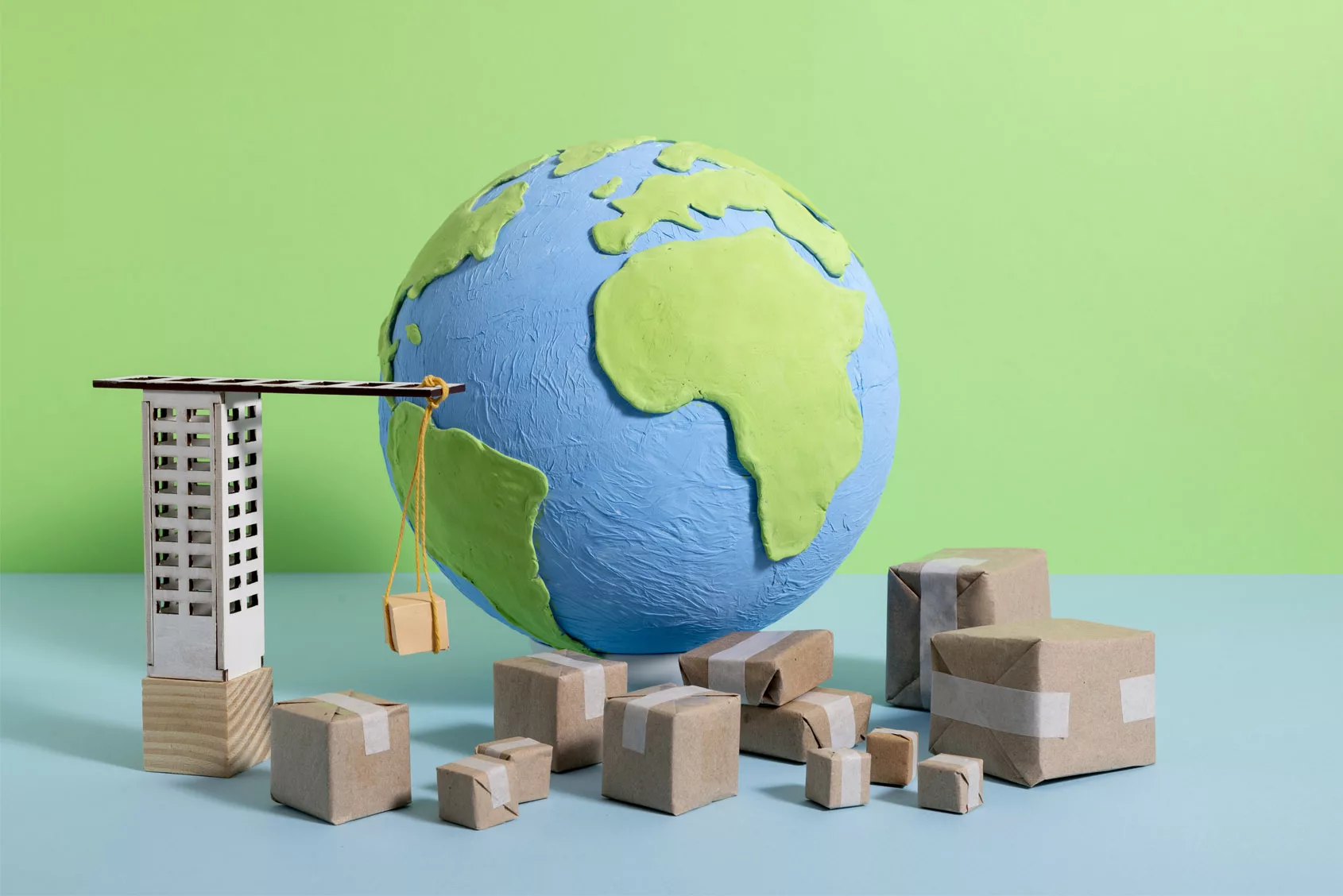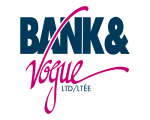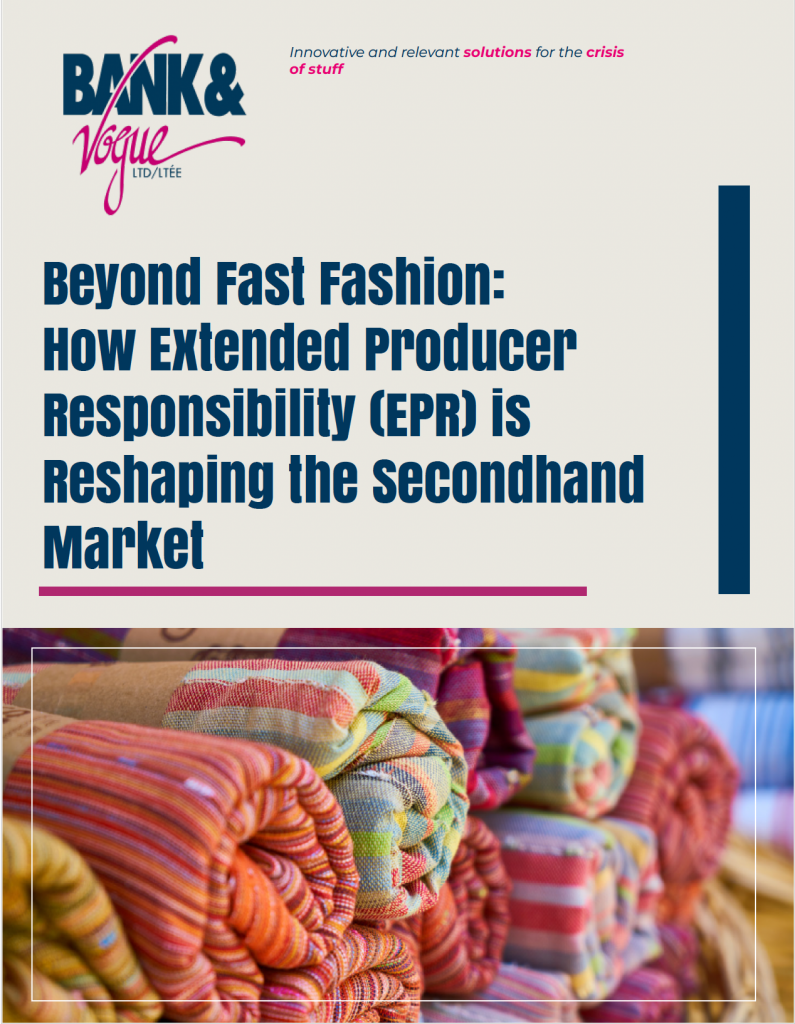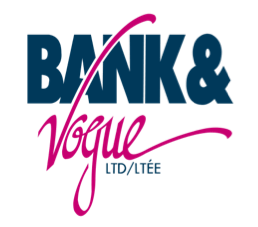Introduction
The global fashion industry faces increasing pressure to address its environmental impact, with policymakers and consumers demanding more sustainable solutions. Extended Producer Responsibility (EPR) policies have emerged as a regulatory framework that holds fashion brands accountable for the end-of-life management of their products. These policies are reshaping the secondhand market by influencing how garments are designed, collected, and redistributed. This white paper explores the impact of EPR on the secondhand clothing industry, the opportunities it creates, and what stakeholders need to consider moving forward.
Understanding Extended Producer Responsibility (EPR) in Fashion
EPR policies mandate that producers take responsibility for the entire lifecycle of their products, including post-consumer waste management. In the fashion industry, this means that brands must contribute to recycling programs, textile recovery initiatives, and the facilitation of reuse and resale.
Key elements of EPR policies include:
- Collection and Recycling Mandates: Brands must establish or support systems for collecting used clothing.
- Financial Contributions: Producers may be required to fund recycling and reuse programs.
- Eco-Design Requirements: Encouragement for designing garments that are easier to recycle and reuse.
- Accountability Metrics: Brands must report their progress in sustainable waste management.


The Impact of EPR on the Secondhand Clothing Market
EPR policies have significant implications for the secondhand market, influencing supply chains, business models, and market dynamics. Some of the key ways EPR is reshaping the secondhand sector include:
1. Increased Supply of Used Textiles
With brands required to facilitate clothing collection programs, more textiles are entering the secondhand stream. This creates opportunities for secondhand wholesalers and retailers to source quality garments directly from brand-backed initiatives.
2. Higher Standards in Sorting and Processing
As EPR policies push brands to ensure their products are responsibly managed, secondhand operators may face increased regulations regarding sorting, grading, and distribution. This can lead to improved efficiency but also requires investment in advanced sorting technologies.
3. Collaboration Between Brands and Secondhand Markets
Retailers and wholesalers in the secondhand industry may increasingly collaborate with brands that are looking to meet EPR obligations. This could lead to partnerships where secondhand operators become official re-commerce or take-back program partners.
4. Potential Market Disruptions
While EPR creates opportunities, it may also lead to challenges, such as:
- Increased costs for secondhand businesses if compliance requirements become too stringent.
- Competition from brands launching their own resale platforms, potentially shifting consumer attention away from independent secondhand retailers.
- The risk of lower-quality garments entering the secondhand supply chain due to fast fashion brands producing low-durability clothing that is difficult to resell or recycle.
Opportunities for Businesses in the Secondhand Sector
Despite the challenges, EPR presents significant opportunities for secondhand clothing wholesalers, retailers, and recyclers, including:
- Becoming an Essential Player in Circular Fashion: Companies that establish strong partnerships with brands can position themselves as key facilitators of textile circularity.
- Investment in Innovation: Sorting and processing facilities that adopt AI-powered sorting or textile-to-textile recycling technologies will benefit from increased demand.
- Educating Consumers and Retailers: Companies that provide transparency about the benefits of secondhand clothing will have a competitive edge in an increasingly sustainability-conscious market.
Conclusion
Extended Producer Responsibility is set to reshape the fashion industry by driving sustainable practices and increasing the accountability of brands. For the secondhand clothing market, these policies bring both challenges and opportunities. Companies that adapt to these changes, invest in innovation, and collaborate with fashion brands will be well-positioned to thrive in this evolving landscape. As the industry moves toward circularity, the secondhand market remains a crucial pillar in reducing textile waste and maximizing the lifespan of garments.
About Bank & Vogue
Bank & Vogue is a global leader in the secondhand clothing industry, specializing in wholesale distribution and circular economy solutions. If you are looking to navigate the evolving secondhand landscape and explore partnership opportunities, contact Bank & Vogue today.








